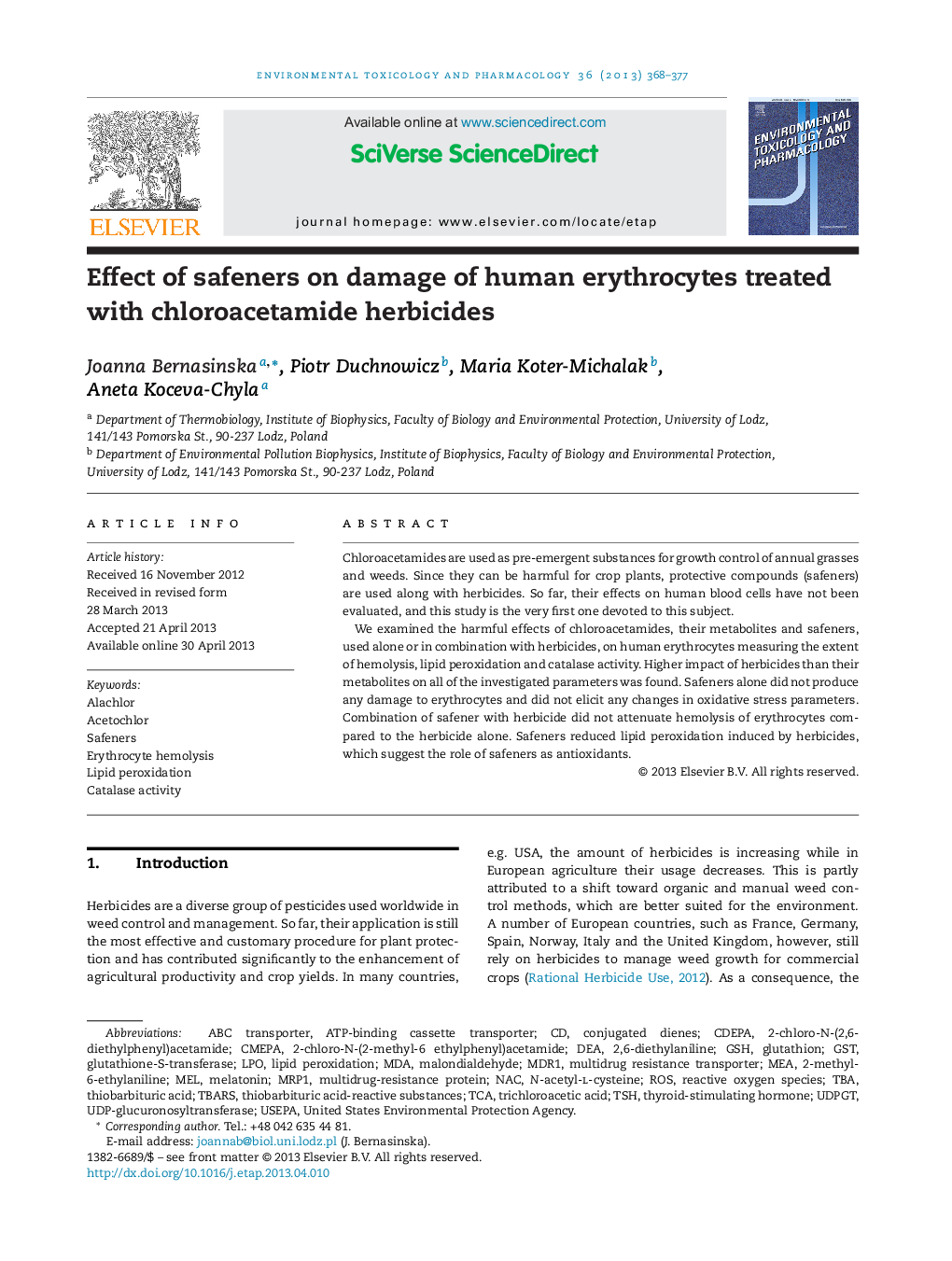| Article ID | Journal | Published Year | Pages | File Type |
|---|---|---|---|---|
| 5848909 | Environmental Toxicology and Pharmacology | 2013 | 10 Pages |
Abstract
We examined the harmful effects of chloroacetamides, their metabolites and safeners, used alone or in combination with herbicides, on human erythrocytes measuring the extent of hemolysis, lipid peroxidation and catalase activity. Higher impact of herbicides than their metabolites on all of the investigated parameters was found. Safeners alone did not produce any damage to erythrocytes and did not elicit any changes in oxidative stress parameters. Combination of safener with herbicide did not attenuate hemolysis of erythrocytes compared to the herbicide alone. Safeners reduced lipid peroxidation induced by herbicides, which suggest the role of safeners as antioxidants.
Keywords
MEATSHN-acetyl-l-cysteineUDPGTMELMDR1TBARSMRP1MDALPONACGSTGSHTCATBADEAABC transporterROSUDP-glucuronosyltransferaseAlachlorUnited States Environmental Protection AgencyAcetochlortrichloroacetic acidThiobarbituric acidMultidrug resistance transporterATP-binding cassette transporterconjugated dienesCatalase activitymalondialdehydeMelatoninthiobarbituric acid-reactive substancesErythrocyte hemolysisThyroid-stimulating hormoneLipid peroxidationmultidrug-resistance proteinUSEPAglutathionglutathione-S-transferaseReactive oxygen species
Related Topics
Life Sciences
Environmental Science
Health, Toxicology and Mutagenesis
Authors
Joanna Bernasinska, Piotr Duchnowicz, Maria Koter-Michalak, Aneta Koceva-Chyla,
